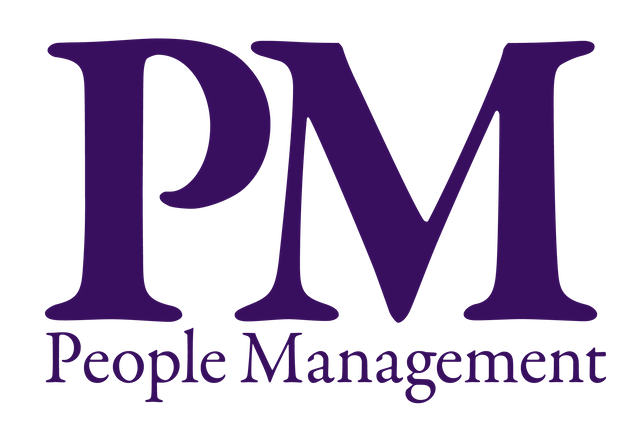As trends and other industry shifts make their impacts on business, your company may sometimes have to make difficult changes in order to reach business goals. Various actions like evaluating systems, processes, and even technology can help an organization right its course without more significant impact to the workforce. Yet there are times when your business may face the unfortunate situation of laying off employees.
Layoffs often leave a palpable impact and impression on employers, employees, consumers, and even the general public. Fear of unemployment is already one of the greatest barriers to employees’ trust in their employers, which according to the 2019 Edelman Trust Barometer, was at best 56% over the past decade. Automation, innovation, trade policies, and tariffs are all present concerns for job security — and layoffs bring those concerns to reality.
Beyond the obvious impact on the shape of your organization, a layoff, whether large or small, can have serious implications for your company as far as your brand reputation is concerned. Effective management of layoffs — including providing excellent outplacement services — can have a strong, lasting effect on the perception current and prospective employees and customers have of your business.
The following outplacement statistics highlight the importance of offering services to help employees find new employment or make a career transition.
1. In 27 studies of downsizing cases from the 1970s to the present, the market response to layoff announcements has been negative.
During the period immediately following a downsizing announcement, nearly all of the organizations experienced negative returns ranging from -0.30 to -2.12%. Even the most positive result saw only a 0.25% increase during the two days following a layoff announcement. These statistics reveal the impact that a layoff can have on investor confidence, creating further issues for the company. The job cuts and market decline are also sure to be reflected in consumer confidence and can result in fewer sales and new customers. Outplacement assistance for affected employees to support them in finding a job can help to better manage your brand reputation in these situations.
2. After being laid off in 1997-1998, 47% of workers were either unemployed or underemployed a year later.
University of Colorado professor Wayne Cascio found that many laid off employees struggle with landing adequate employment, even a year after losing their jobs. Of the workers who were laid off from 1997-1998, only 41% were able to find equivalent or higher-paying jobs within the ensuing year. These layoffs have lasting effects, with earnings remaining 20% lower compared to peers who were not displaced, even 20 years later. While the long-term effect of a layoff on former employees can reflect badly on a company, taking the right steps to help these new job seekers find careers through outplacement services can change this narrative for both the workers and their former organization.
3. Survivors of a layoff event experience a 20% decline in job performance.
There is no question that downsizing plays a role in the perspectives of not only the employees who leave, but also those who remain. In an often stressful post-layoff environment, employees may feel less secure in their own positions while being required to take on additional responsibilities. Survivors of a layoff demonstrate a 41% drop in job satisfaction as well as a 20% reduction in job performance. These factors, especially when left unbalanced by the offer of outplacement services for laid off workers, can continue to create new costs for an employer.
4. A 1% decrease in the size of your workforce can lead to a 31% increase in turnover across the following year.
In the environment of heightened stress and reduced security that can follow a layoff period, remaining employees are less likely to demonstrate loyalty to their employer and will often actively search for new opportunities. At the same time, a layoff can be a signal to competitors that these workers may be more likely to move. A layoff as small as 1% of your workforce can result in up to 31% more employees leaving your organization within the following year. Transition assistance offered to laid off workers can help restore that confidence, keeping more of your workers on board through a challenging time.
Protecting Your Brand Reputation with Outplacement Services
These statistics clarify the very real impact that a layoff can have on your brand reputation as well as your business’ success. While a downsize may seem inevitable, the resulting risks to your organization can be reduced by taking the right steps to take care of laid off employees. Outplacement firms can help to ease the job loss experience by helping an employee find a new career through services such as career coaching, job training, job search tools, leadership training, and interview coaching. Outplacement services can also include help employees with cover letter creation and social media engagement for identifying new job opportunities.
Handled properly and considerately, a layoff is an opportunity for your organization to do the right thing for your employees. Provide and offer outplacement services to create an experience that leaves a genuinely positive impression of your business with employees, as well as the partners, investors, and the public.
Intoo uses a six-step process to transition employees into new positions. By offering outplacement services, you can give your workers access to:
- Millions of the latest job opportunities in your industry.
- Resume-building technology that will give former employees an upper-hand in the job market.
- Career assessment tools that help your employees identify their skills.
- Simulated interviews that make workers more comfortable as they seek new positions.
Layoffs may represent a difficult chapter in your organization’s path, but it doesn’t have to have a long-term impact on your organization’s reputation. Schedule a demo with Intoo today to learn more about the benefits of outplacement assistance, the services we offer, and the help we can provide both you and your employees.











